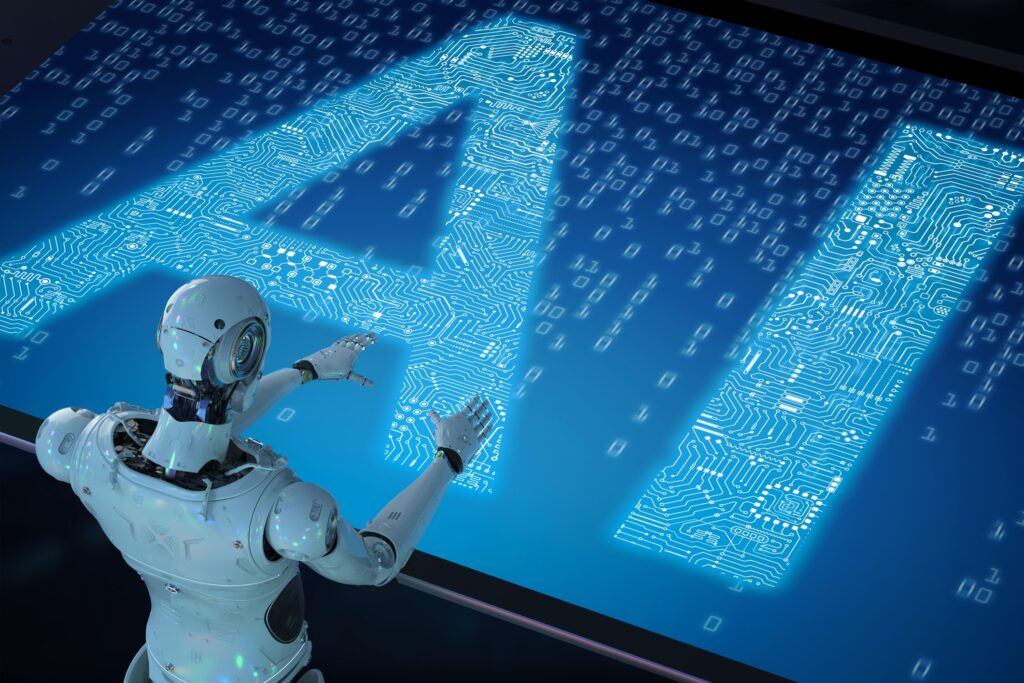ARTIFICIAL INTELLIGENCE (AI): REGULATION AND APPLICATION
Recently, the World’s first-ever AI Safety Summit was held at Bletchley Park in Buckinghamshire near London (United Kingdom).
• 27 major countries including the United States, China, Japan, UK, France, and India, and the European Union agreed to sign a declaration, named the Bletchley Declaration.
• The Declaration fulfils key summit objectives in establishing shared agreement and responsibility on the risks, opportunities and a forward process for international collaboration on frontier AI safety and research.
source: internet
What are the risks associated with AI development that necessitate its regulation?
• Control of Big Tech: Decisions about the development of AI are overwhelmingly in the hands of the big tech companies with access to vast stores of digital data and immense computing power.
• Misuse: Substantial risks may arise from potential intentional misuse or unintended issues of control relating to
alignment with human intent.
o Frontier AI systems may amplify risks such as disinformation through the use of algorithms.
o Increasing instances of deepfakes, intentional sharing of harmful information and cyber frauds are examples of
it. E.g., instances observed in elections across the world.
• Model Collapse scenario: Over time, datasets may be poisoned by AI-generated content which changes the patterns in the dataset, incorporating mistakes of previous AI models. E.g., issues of racial discrimination experienced in previous AI models.
• Model adoption challenges: There are risks associated with different models for AI development.
o Closed: An ecosystem limited to a small number of closed models and private organizations can prevent misuse by malicious actors but has the potential for safety failures and undetected biases to propagate.
o Open-source: On the other hand, an open-source model can spot biases, risks or faults but increases the risk of misuse by malicious actors.
• Cyber risks: Global tensions and the rise in cyber capabilities have led to escalating cyber crime or hacking incidents and consequent disruption of public services.
• Economic risks: The effects of AI in the economy, such as labour market displacement or the automation of financial markets, could cause social and geopolitical instability.
image source: internet
What has been done to regulate AI?
• European Union: EU’s AI Act intends to be the world’s first comprehensive AI law.
o It classifies AI systems into four tiers of risk and different tiers are subject to different regulations.
o A new EU AI office would be created to monitor enforcement and penalties including fines of up to 6% of total
worldwide revenue.
• USA: Regulation to set standards on security and privacy protections and builds on voluntary commitments adopted by more than a dozen companies.
• India: Government of India is contemplating to bring out a comprehensive Digital India Act to regulate AI.
o NITI Aayog released the National Strategy on Artificial Intelligence (NSAI) which focuses on Responsible AI for
All (RAI) principles.
• China: China’s regulations require an advanced review of algorithms by the state and should adhere to the core
socialist values.
o AI-generated content must be properly labelled and respect rules on data privacy and intellectual property.
What can be done to better regulate AI systems?
• International Cooperation: Since many challenges posed by AI regulation cannot be addressed at a purely domestic level, international cooperation is urgently needed to establish basic global standards.
• Impact assessment: International efforts to examine and address the potential impact of AI systems is needed.
• Proportionate Governance : Countries should consider the importance of a pro-innovation and proportionate
governance and regulatory approach that maximises the benefits and takes into account the risks associated with AI.
• Private sector accountability: Increased transparency by private actors developing frontier AI capabilities,
appropriate evaluation metrics, tools for safety testing, and developing relevant public sector capability and scientific
research.
• Better Design: To reduce degree and impact of bias and harmful responses, there is a need for curated, fine-tuned datasets with inclusion of more diverse groups and continuous feedback mechanism.
Some Key application Areas of AI
- AI has the potential to drive Growth by enbling intelligent automation among others.
- Enhance access to quality healthcare, education, digital inclusion and lifting the standard of life.
- Optimizing and delivering goods and services to remote areas and vulnerable populations
- Adoptabbility of AI based on local climate conditions to improve agriculture and allied sectors
- Exploring new avenues and technologies for quality edcation and skilling the workforce.
Principle for responsible AI management
- Principle of safety and reliability.
- Principle of equality.
- Principle of inclusivity and non discrimination.
- Principle of privacy and security.
- Principle of of transparency.
- Principle of accountabbility.
- Principle of protection and reinforcement of positive human values.

